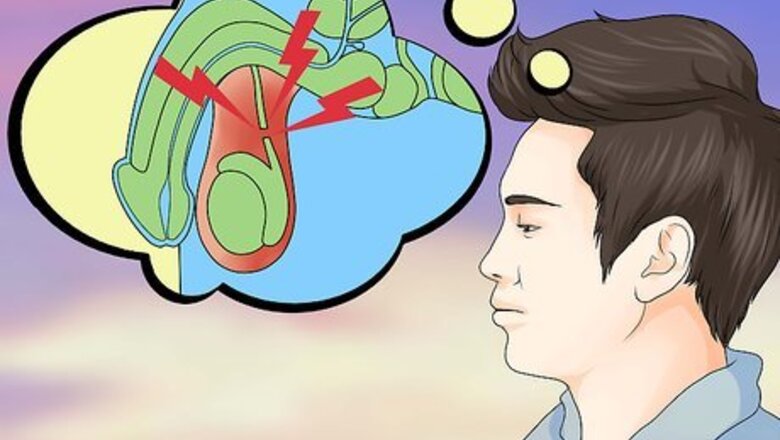
views
Controlling Pain After Your Vasectomy
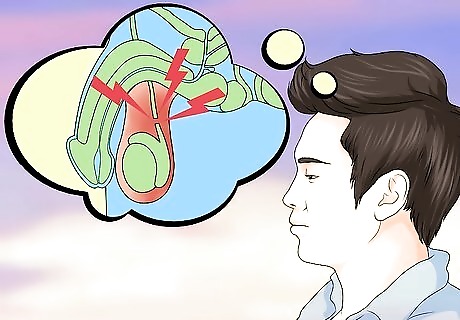
Expect mild swelling and pain. After surgery, you will probably have some pain and swelling in your scrotum. You may also notice some fluid leaking from the incision site after surgery. This is entirely normal and should improve and resolve itself within a few days. Use gauze and/or bandages as needed and as recommended by your doctor. Look at your scrotum with a hand mirror once or twice per day to see how it is healing. If swelling is continuing to get worse, or you notice significant redness or bruising that does not improve, see your doctor for further evaluation. Keep in mind that healing often proceeds without complications and you should see your scrotum beginning to look normal again after a few days.

Take pain medications as needed. Normally an over-the-counter pain medication such as Tylenol (acetaminophen) will suffice. If you require stronger medication to control your pain, book another appointment with your physician and they can write you a prescription for stronger pain medications. However, most people are fine with over-the-counter medications and do not need to opt for anything stronger.
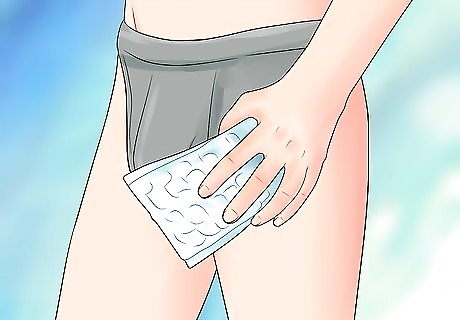
Use an ice pack to control pain and swelling. For the first two days after the procedure, ice the scrotum area for 20 minutes every hour or so. After that, use ice as needed to help with pain and swelling. Icing helps to diminish inflammation in the scrotum area and also reduces swelling. It can therefore be helpful in reducing symptoms of pain and discomfort. When started early after the vasectomy procedure is done, it can also help to speed the recovery process.
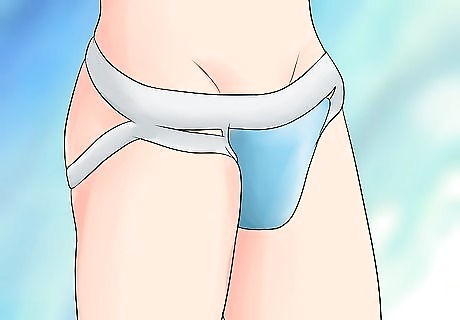
Support your scrotum. Leave on the bandage that your doctor placed on your scrotum for 24 to 48 hours following the surgery. Wearing tight-fitting underwear or a jockstrap is a good idea as well, as it can help to alleviate discomfort and protect the area.
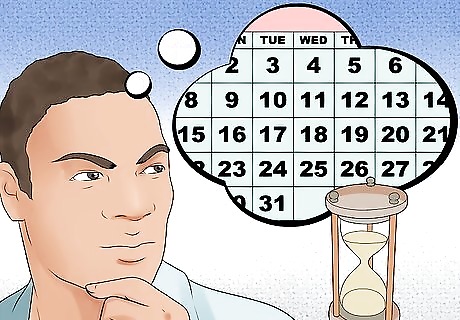
Try to be patient. After a week has passed, most of the bothersome symptoms, such as swelling and pain, should be resolved. Call your doctor immediately if your symptoms persist, or if you notice any signs of complications such as an infection. Symptoms that are typically associated with a post-operative infection include fever, blood or pus coming out of the surgical site, and/or worsening pain and swelling. Other complications to be aware of include continued bleeding beyond 48 hours after surgery (or formation of a large bruise, called a "hematoma," on the scrotum); something called a "sperm granuloma" (which is basically a harmless mass that forms in the testicles as a sort of immune response); and/or persistent pain.
Making Lifestyle Adjustments After Your Vasectomy
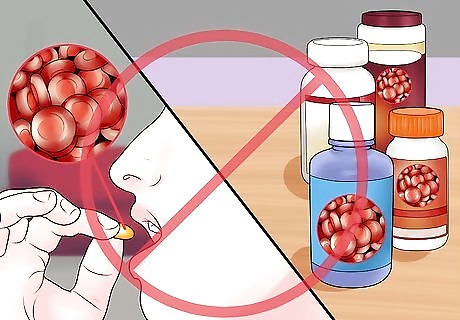
Avoid taking blood-thinning medications for a few days. You should not take any blood thinning medications for at least a few days following your vasectomy. Be sure to ask your doctor for specific advice on this if you are taking blood-thinning medications. This is because taking blood-thinning medications may increase your risk of post-operative bleeding. Know that the duration of time to be off your blood-thinning medications varies from person to person (depending on the reason you are taking them). Ask your doctor when you can resume your normal medications.
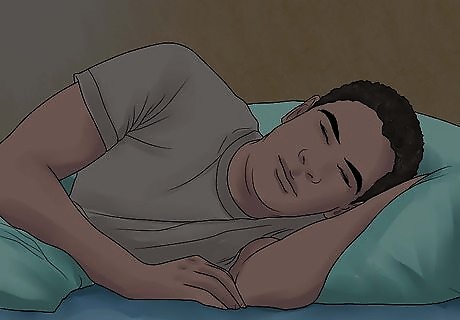
Get plenty of rest. One of the most important components of recovering from your vasectomy is rest. You may need to take a few days off of work or cut back on your usual activities to facilitate healing. Unless your work is strenuous or requires heavy lifting, you should be able to go back quite quickly, such as within two to three days. If your job requires heavy lifting, talk to your doctor about when it will be safe for you to return. Try not to do too much for the first two to three days following the procedure, and don't be afraid to ask others to help you out so that you can relax and recover. Keep your activity level to a minimum after your vasectomy. It is advisable to limit physical activities for about five days post-surgery, and to refrain from heavy lifting for at least a week. Heavy lifting strains the area and therefore interferes with healing. After five days, you may resume exercise, starting out easy and getting back to your normal routine after a couple of weeks.

Refrain from all types of sexual activity for seven days. Ejaculation can be painful and sometimes lead to bleeding in the initial stages after your vasectomy. Therefore, you will not be able to engage in any sexual activity about seven days after your vasectomy. When you do choose to resume sexual activity (after a week has passed and you feel comfortable enough to do so), remember that you will need to use birth control until you have had follow-up tests with your doctor confirming that your sperm count is zero. It usually takes 20 ejaculations after the surgery for residual sperm to be fully cleared. Overall a vasectomy results in no changes to a person's sexual function. Many people are concerned it could affect desire, erections, and/or the sensation of orgasm; however, studies have been done to confirm that none of these are negatively affected by the procedure. Studies have shown that women's sexual satisfaction has increased after their partner has had a vasectomy. This may be due to greater confidence that there will not be an unwanted pregnancy. Note that there is also a very small risk (0.1% per year) of becoming pregnant even after you have had a vasectomy. This is because, even though the two ends of the vas deferens have been "disconnected" from one another, there is still a tiny chance that sperm could pass through and result in pregnancy. The chance is so low, however, that a vasectomy (or a "tubal ligation," which is the comparable procedure in women) is still considered the most effective form of birth control for those couples who have decided they do not want to have any more children.
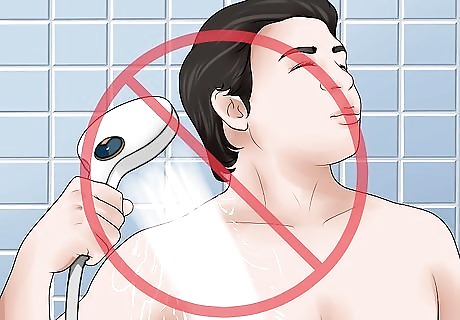
Do not swim or bathe for 24 to 48 hours after your vasectomy. Depending on the technique that your doctor used, you may have stitches in your scrotum. To prevent an infection from developing, it is best to keep the stitches dry by not bathing or swimming for the first couple of days. Ask your doctor when it is okay to start bathing and/or swimming again.


















Comments
0 comment